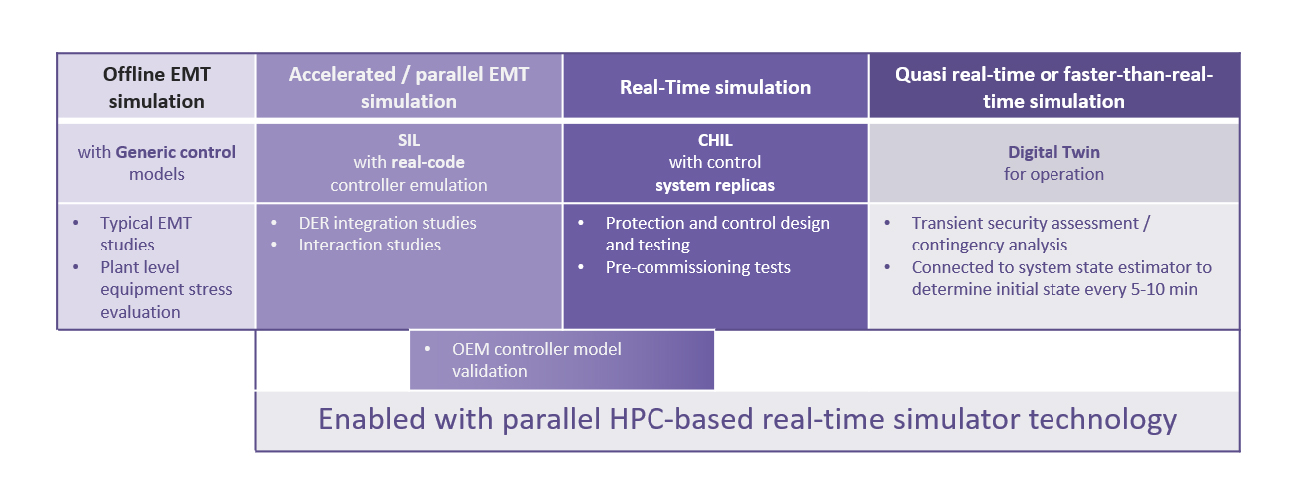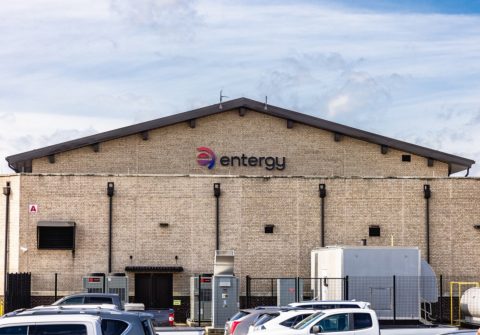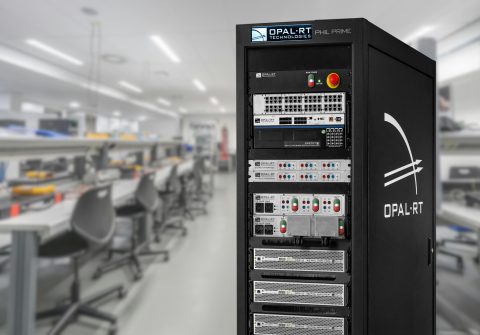
By: S. Li, J. Bélanger, M. Cervantes, M. Kazemtabrizi, J.N. Paquin, V. Lapointe, W. Li, J. Paez-Alvarez
The increase in inverter-based renewables (IBRs), flexible AC transmission system (FACTS), and high voltage direct current (HVDC) systems, coupled with the retirement of synchronous generating plants, is significantly reducing inertia in large-scale power systems. Fast controllers of IBRs should stabilize these systems, but they are highly sensitive to fast transients, harmonics, and system imbalances.
Research findings indicate that relying solely on simplified positive-sequence simulations is inadequate for evaluating the transient stability of extensive power grids equipped with a substantial number of IBR controllers. In this context, detailed electromagnetic transient (EMT) simulations are becoming essential for the seamless integration of renewable energy sources such as wind and solar.
The capability to perform fast simulations in software-in-the-loop (SIL) mode with generic or real-code controllers is indeed useful to determine the worst contingencies in the shortest time to develop the equivalent circuit required for real-time hardware-in-the-loop (HIL) simulation to test and optimize control performance.
Naturally, fast EMT simulation of large-scale power systems will also become essential for online transient stability assessment to aid system operators, planning, and IBR integration analysis. However, EMT simulation of large-scale power systems with complex power electronic systems is computationally intensive. Moreover, it involves managing a significant amount of data and interfacing HVDC, FACTS, and IBR plant controller models, which are often delivered as black box codes without any interoperability standard, with grid simulation tools.
This paper describes solutions to achieve real-time or near-real-time EMT simulation of large-scale power systems with high IBR penetration. The proposed techniques implement fast parallel simulation either based on in-house clusters of high-performance computers or cloud servers.

The proposed solution further simplifies the design and testing of wide area monitoring, protection and control systems (WAMPAC) through near-real-time fully digital software-in-the-loop (SIL) tests with virtual wide area controllers or in real-time with the actual hardware controller equipment typically used in the control room. Most importantly, it will aid system owners and operators in performing online transient stability assessments at much higher speeds and with high-fidelity models, including OEM control emulators.

An interview with Entergy’s Thomas Field: Inverter-based resource integration and modelling challenges | Summer 2025

OPAL-RT unveils the PHIL Prime test bench: The only fully-integrated test bench on the market | Summer 2025
